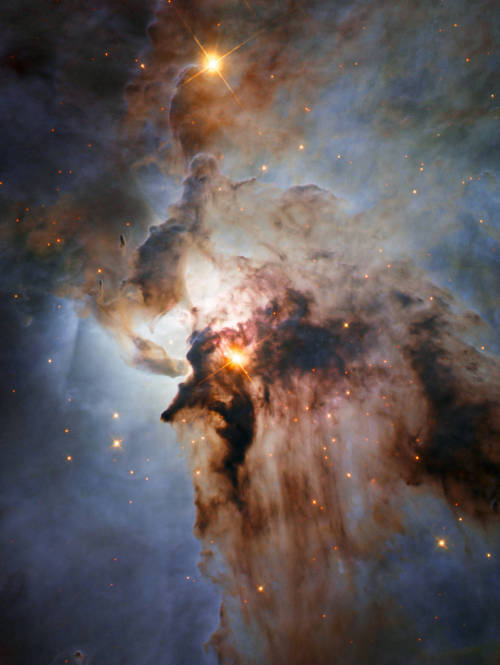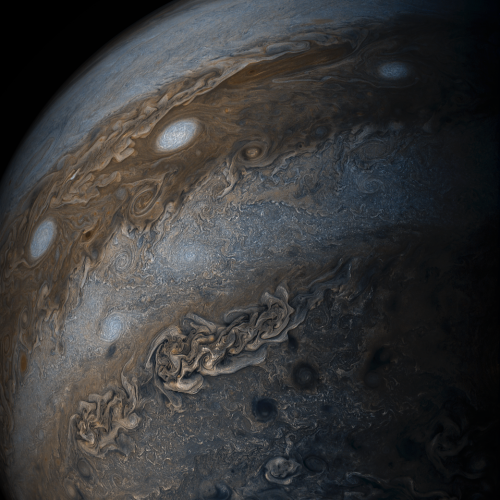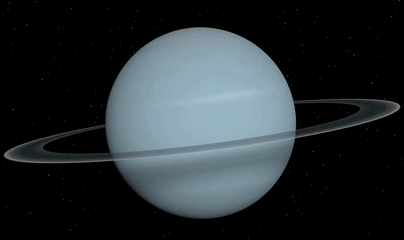Hubble Peeks Inside A Stellar Cloud

Hubble peeks inside a stellar cloud
These bright stars shining through what looks like a haze in the night sky are part of a young stellar grouping in one of the largest known star formation regions of the Large Magellanic Cloud (LMC), a dwarf satellite galaxy of the Milky Way. The image was captured by the NASA/ESA Hubble Space Telescope’s Wide Field Planetary Camera 2.
The stellar grouping is known to stargazers as NGC 2040 or LH 88. It is essentially a very loose star cluster whose stars have a common origin and are drifting together through space. There are three different types of stellar associations defined by their stellar properties. NGC 2040 is an OB association, a grouping that usually contains 10–100 stars of type O and B — these are high-mass stars that have short but brilliant lives. It is thought that most of the stars in the Milky Way were born in OB associations.
There are several such groupings of stars in the LMC, including one previously featured as a Hubble Picture of the Week. Just like the others, LH 88 consists of several high-mass young stars in a large nebula of partially ionised hydrogen gas, and lies in what is known to be a supergiant shell of gas called LMC 4.
Over a period of several million years, thousands of stars may form in these supergiant shells, which are the largest interstellar structures in galaxies. The shells themselves are believed to have been created by strong stellar winds and clustered supernova explosions of massive stars that blow away surrounding dust and gas, and in turn trigger further episodes of star formation.
The LMC is the third closest galaxy to our Milky Way. It is located some 160 000 light-years away, and is about 100 times smaller than our own.
This image, which shows ultraviolet, visible and infrared light, covers a field of view of approximately 1.8 by 1.8 arcminutes.
A version of this image was entered into the Hubble’s Hidden Treasures Image Processing Competition by contestant Eedresha Sturdivant. Hidden Treasures is an initiative to invite astronomy enthusiasts to search the Hubble archive for stunning images that have never been seen by the general public.
These bright stars shining through what looks like a haze in the night sky are part of a young stellar grouping in one of the largest known star formation regions of the Large Magellanic Cloud (LMC), a dwarf satellite galaxy of the Milky Way. The image was captured by the NASA/ESA Hubble Space Telescope’s Wide Field Planetary Camera 2.
The stellar grouping is known to stargazers as NGC 2040 or LH 88. It is essentially a very loose star cluster whose stars have a common origin and are drifting together through space. There are three different types of stellar associations defined by their stellar properties. NGC 2040 is an OB association, a grouping that usually contains 10–100 stars of type O and B — these are high-mass stars that have short but brilliant lives. It is thought that most of the stars in the Milky Way were born in OB associations.
There are several such groupings of stars in the LMC, including one previously featured as a Hubble Picture of the Week. Just like the others, LH 88 consists of several high-mass young stars in a large nebula of partially ionised hydrogen gas, and lies in what is known to be a supergiant shell of gas called LMC 4.
Over a period of several million years, thousands of stars may form in these supergiant shells, which are the largest interstellar structures in galaxies. The shells themselves are believed to have been created by strong stellar winds and clustered supernova explosions of massive stars that blow away surrounding dust and gas, and in turn trigger further episodes of star formation.
The LMC is the third closest galaxy to our Milky Way. It is located some 160 000 light-years away, and is about 100 times smaller than our own.
This image, which shows ultraviolet, visible and infrared light, covers a field of view of approximately 1.8 by 1.8 arcminutes.
A version of this image was entered into the Hubble’s Hidden Treasures Image Processing Competition by contestant Eedresha Sturdivant. Hidden Treasures is an initiative to invite astronomy enthusiasts to search the Hubble archive for stunning images that have never been seen by the general public.
ESA/Hubble, NASA and D. A Gouliermis. Acknowledgement: Flickr user Eedresha Sturdivant
https://www.spacetelescope.org/images/potw
More Posts from Xyhor-astronomy and Others

December 13, 1972 – Photos taken during the Apollo 17 rover’s drive back to the lunar module. (NASA)

Stormy Seas in Sagittarius
This new NASA/ESA Hubble Space Telescope image shows the center of the Lagoon Nebula, an object with a deceptively tranquil name, in the constellation of Sagittarius. The region is filled with intense winds from hot stars, churning funnels of gas, and energetic star formation, all embedded within an intricate haze of gas and pitch-dark dust.
Image Credit: NASA/JPL/ESA/J. Trauger

Jupiter’s Bands of Clouds
This enhanced-color image of Jupiter’s bands of light and dark clouds was created by citizen scientists Gerald Eichstädt and Seán Doran using data from the JunoCam imager on NASA’s Juno spacecraft.
Three of the white oval storms known as the “String of Pearls” are visible near the top of the image. Each of the alternating light and dark atmospheric bands in this image is wider than Earth, and each rages around Jupiter at hundreds of miles (kilometers) per hour. The lighter areas are regions where gas is rising, and the darker bands are regions where gas is sinking.
Credits: NASA/JPL-Caltech/SwRI/MSSS/Gerald Eichstädt /Seán Doran

Curiosity drill site reveals that under its red surface, Mars is grey-blue
via reddit

The Comet and the Star Cluster : Comet Linear has become unexpectedly bright. The comet, discovered in 2000, underwent a 100-fold outburst just a week before it passed a mere 14 lunar distances from Earth late last month. The comet was captured here last week at about magnitude 6 just bright enough to be seen by the unaided eye passing in front of the distant globular star cluster M14. Comet 252/P LINEAR is one of a rare group of comets that vacillate between the Earth and Jupiter every 5 years. How the comet will evolve from here is unknown, but hopes run high that it will remain a good object for binoculars in northern skies for the next week or two. via NASA
js









5 Questions You Were Too Embarrassed To Ask About The Expanding Universe
“5.) Are there galaxies moving away faster than the speed of light, and isn’t that forbidden? From our point of view, the space in between us and any distant point is expanding. The farther away something is, the faster it appears to recede from us. Even if the expansion rate were tiny, an object far enough away would eventually cross that threshold of any finite speed, since an expansion rate (a speed-per-distance) multiplied by a great enough distance will give you a speed as fast as you want. But this is okay in General Relativity! The law that nothing can travel faster than the speed of light only applies to an object’s motion through space, not to the expansion of space itself. In reality, the galaxies themselves only move around at speeds that are hundreds or thousands of km/s, much lower than the 300,000 km/s speed limit set by the speed of light. It’s the expansion of the Universe that causes this recession and the redshift, not a true galactic motion.”
The idea that the spatial fabric of the Universe itself is expanding, and that’s what’s behind the observed relationship between redshift and distance has long been controversial, and also long-misunderstood. After all, if more distant objects appear to recede more quickly, couldn’t there be a different explanation, like an explosion that flung many things outward? As it turns out, this isn’t a mere difference in interpretation, there are observations we can make that tell us the answer! The Universe is not expanding ‘into’ anything, despite what your intuition might tell you. The Hubble ‘constant’ isn’t actually a constant, but is rather decreasing as time goes on. The Universe looks like it’s going to expand forever, but even that scientific conclusion is subject to revision depending on what data shows in the future. And although 97% of the galaxies in the Universe are already unreachable, it isn’t a violation of relativity or a faster-than-light phenomenon that’s to blame.
Come learn the answers to five questions about the expanding Universe that many are too embarrassed to ask!

Should there be a holiday called Astronomy Day?
Where lights are to be turned off for the entire night so everyone could see the stars?










Ask Ethan: Why don’t we build a telescope without mirrors or lenses?
“Why do we need a lens and a mirror to make a telescope now that we have CCD sensors? Instead of having a 10m mirror and lens that focus the light on a small sensor, why not have a 10m sensor instead?”
Every time you shine light through a lens or reflect it off of a mirror, no matter how good it is, a portion of your light gets lost. Today’s largest, most powerful telescopes don’t even simply have a primary mirror, but secondary, tertiary, even quaternary or higher mirrors, and each of those reflections means less light to derive your data from. As CCDs and other digital devices are far more efficient than anything else, why couldn’t we simply replace the primary mirror with a CCD array to collect and measure the light? It seems like a brilliant idea on the surface, and it would, in fact, gather significantly more light over the same collecting area. True, CCDs are more expensive, and there are technical challenges as far as applying filters and aligning the array properly. But there’s a fundamental problem if you don’t use a mirror or lens at all that may turn out to be a dealbreaker: CCDs without lenses or mirrors are incapable of measuring the direction light is coming from. A star or galaxy would appear equally on all portions of your CCD array at once, giving you just a bright, white-light image on every single CCD pixel.
It’s a remarkable idea, but there’s a good physical reason why it won’t pan out. For the foreseeable future, we still need optics to make a telescope! Find out why on this week’s Ask Ethan.

Planet Uranus ♅
Equatorial Diameter: 51.118 km
Satellites: 27
Notable satellites: Oberon, Titania, Miranda, Ariel & Umbriel
Orbit Distance: 2.870.658.186 km (19 AU)
Orbit Period: 84 Earth years
Surface Temperature: -220°C
Discovered Date: March 13th 1781
Discovered By: William Herschel
Image credit: Oscar Malet
-
 xyhor-astronomy reblogged this · 7 years ago
xyhor-astronomy reblogged this · 7 years ago -
 the-tired-cryptid liked this · 7 years ago
the-tired-cryptid liked this · 7 years ago -
 kskn202gobro liked this · 7 years ago
kskn202gobro liked this · 7 years ago -
 dappledsunlighty liked this · 7 years ago
dappledsunlighty liked this · 7 years ago -
 baileyjay2002 liked this · 7 years ago
baileyjay2002 liked this · 7 years ago -
 drfrasiercraneislistening liked this · 7 years ago
drfrasiercraneislistening liked this · 7 years ago -
 quantum-mecha reblogged this · 7 years ago
quantum-mecha reblogged this · 7 years ago -
 quantum-mecha liked this · 7 years ago
quantum-mecha liked this · 7 years ago -
 space--bot reblogged this · 7 years ago
space--bot reblogged this · 7 years ago
For more content, Click Here and experience this XYHor in its entirety!Space...the Final Frontier. Let's boldly go where few have gone before with XYHor: Space: Astronomy & Spacefaring: the collection of the latest finds and science behind exploring our solar system, how we'll get there and what we need to be prepared for!
128 posts